Telegrams, Documents and Media
In this section, we intend to display as many old telegrams, documents, newsletters and advertisements as we can. Please contact us if you think you have something that may be worth showing.
In this section, we intend to display as many old telegrams, documents, newsletters and advertisements as we can. Please contact us if you think you have something that may be worth showing.
Telegrams
This is a collection of various kinds of telegrams from throughout the 20th century, ranging from business transactions to birthday greetings to wartime messages from loved ones on their way home from conflict.
If you have any such memorabilia that you would like to share, please let us know.
We're grateful to Jim Grant, who delved into his collection of C & W memorabilia, and came up with these two telegrams. The first one shows how to precisely address a telegram - if you don't know have any information as where the addressee actually lives. The second one displays a little business acumen - someone will always take advantage of the misfortunes of others.
Here's a telegram from London to the 'Maison du Mexique' - student accommodation at the University of Paris, asking 'When is Octavio arriving in Paris' and to reply to Kensington Gardens. The telegram is accompanied by a Service Telegram, advising that it was eventually forwarded on by mail.
Also shown is the reverse of the telegram form.
Greetings Telegrams - two beautiful examples of Belgian Greetings Telegrams flank an equally charming 1951 Inland Greetings. We'd welcome a translation of the one the left, but a rough translation of the one on the right expresses 'Cordial congratulations and a good life under God's blessing.'
Two telegrams concerning commercial transactions, the one on the left from 1866, and the one on the right from 1923. The 1866 telegram is from 'Gover' in Worcester, to `Mr Botterell' an auctioneer in Hereford, advising that 'I shall be with you tomorrow at 1 o'clock to settle for the sale yesterday'. The 1923 message seems to be an instruction to Adamson's broker to 'Sell market value time essential'
Expeditionary Forces Messages (EFMs) was a service offered to military personnel and their families. Commonly used social messages were given a code number, and up to three messages/numbers would cost 2s 6d. The top three messages in this selection are all dated after the D-Day landings in June 1944, and one can only hope that the senders made it back home after the cessation of hostilities. The image at bottom right lists the social message codes.
This telegram, sent from Sydney in 1946, appears to still show concern for the health of the recipient's husband!
From our Editor, Ron Shepherd, an example of an Inland Greetings Telegram from 17th April 1938, from Elsie Carlisle (pictured, right) to Ron's Aunt and Uncle on the occasion of their wedding. Elsie Carlisle was a renowned singer and actress in the 1920's and 30's, and Ron's Uncle used to drive a lot of the big bands around at that time.
News and Views International Telegraphs Staff Magazine
News and Views started publication in February 1975 and below is a selection from the 70's and 80's. If you recognise yourself or anyone else in any of the magazines, please let us know - See Contacts and Links page.
May 1975 - Issue No.2
August 1975 - Issue No.3
September 1977 - Issue No.9
December 1977 - Issue No.10
February 1980 - Issue No.17
April 1981 - Issue No.20
The Overseas Telegraph
The 'Overseas Telegraph' was the official organ of the Government Overseas Cable and Wireless Operators Association. This edition was printed in 1943. If you have any information about this publication, please let us know.
Apollo Moon Landing 1969
Mick Furby sent us a copy of the above certificate that was given to his father, William (Bill) Furby, for his role in the NASA office set up in Electra House in the early 1960s.
In the early 1960s it was agreed that a NASA (National Aeronautics and Space Administration) office would be set up at Electra House, manned by senior OTOs who would be trained by the Americans and who would work under a U.S. manager.
They were to monitor data sent from spacecraft and satellites on behalf of NASA to ensure the quality of the signals and data transmitted to and from spacecraft. This was of prime importance as constant monitoring of the craft and astronauts could help prevent potential disaster. The signals were put through an amplifying system and if too weak or garbled could be re-routed via a stronger signal.
Signals could be switched to anywhere in the world including Australia as well as through ships at sea. The department worked with tracking stations in the U.S., Australia and Spain with additional voice links to these countries.
The team, who were housed on the upper ground floor of Electra House in a room marked ‘NASA, Strictly No Entry’, by necessity led a secure and somewhat isolated existence whilst working on Gemini, Apollo and the Space Shuttle missions.
During this time astronaut, and later Senator, John Glenn (1921-2016) visited Electra House, one of many famous visitors over the years, including Yuri Gagarin (1934-1968), the 'first man in space', who completed an Earth orbit in April 1961.
Later, on 21st July 1969, that momentous achievement of putting a man on the moon took place. President John F. Kennedy had famously set the challenge in May 1961 in his address to Congress of “landing a man on the moon and returning him safely to earth by the end of the decade”. Electra House was to play a not insignificant role in working with NASA to achieve that aim, sharing the incredible suspense of successive moon shots and in particular the dramas of July 1969 with Neil Armstrong, Buzz Aldrin and Michael Collins in Apollo 11 and later in April 1970, as the crippled Apollo 13 capsulte limped safely back to earth on a ‘wing and a prayer’ with astronauts Jim Lovell, Jack Swigert and Fred Haise, Jr.The NASA room was to continue in operation until March 1984 when it was closed down after many happy years of collaboration between the two organisations.
Falcon House Staff List
On October 25th, 1965, Falcon House OTAO opened for business. The replicated documents below list the members of staff who were employed there, with later annotations. The first two list the OTO1 staff and their qualifications, the second two show the OTO2's. Thanks to Eamon Doran and Peter Burles.
Were you at Falcon House? Can you spot your name? Any (publishable) memories of your former colleagues?
Jim Malone fondly remembers Mrs Antrobus-Weston, Jo Steadman, the Pugsley brothers, Alf Masters and Harry Hogg. Jim says that nothing much was achieved on the first day at Falcon House, but everyone had a great time!
Advertising & Media
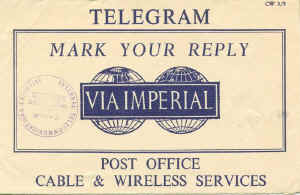 Telegram envelope
Telegram envelope
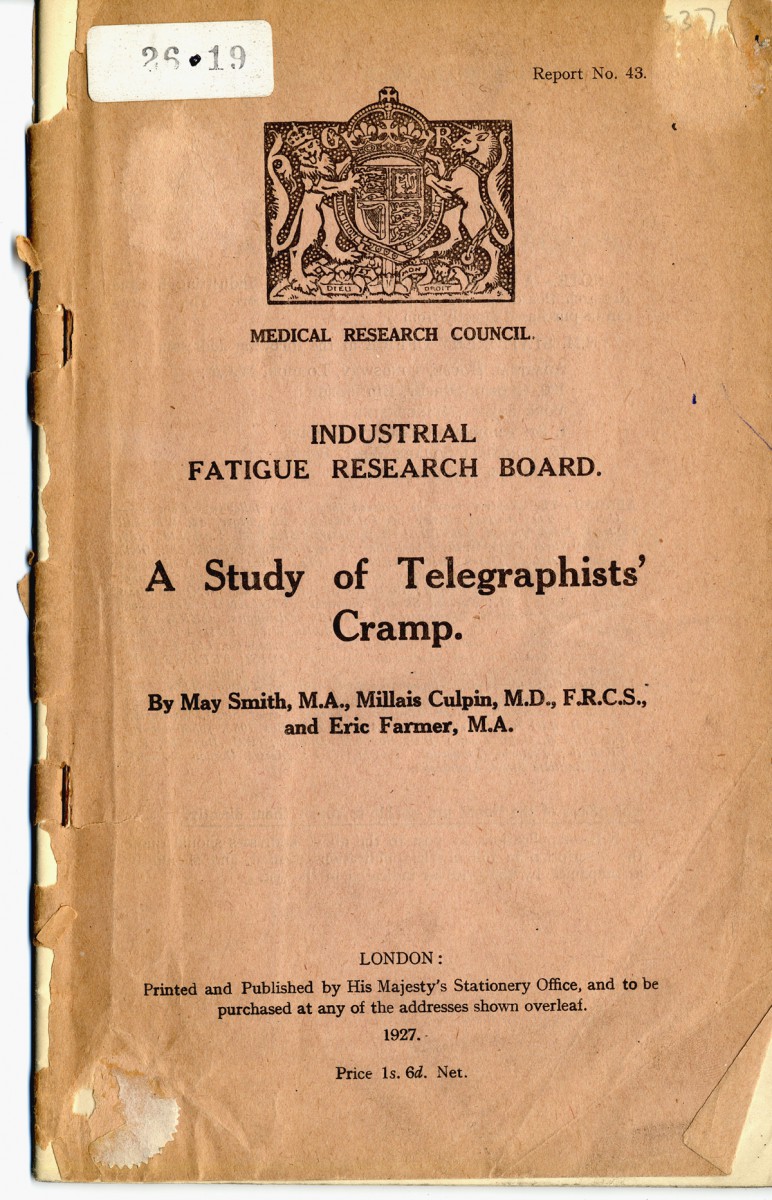 Medical Research
....before it came to be known as RSI
Medical Research
....before it came to be known as RSI
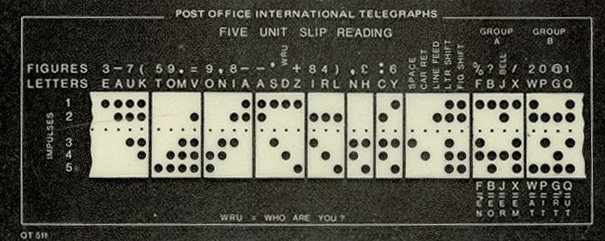 5 Unit Reference Card
Also known as Murray Code and Baudot Code.
5 Unit Reference Card
Also known as Murray Code and Baudot Code.
 Cable & Wireless advertisement
Cable & Wireless advertisement
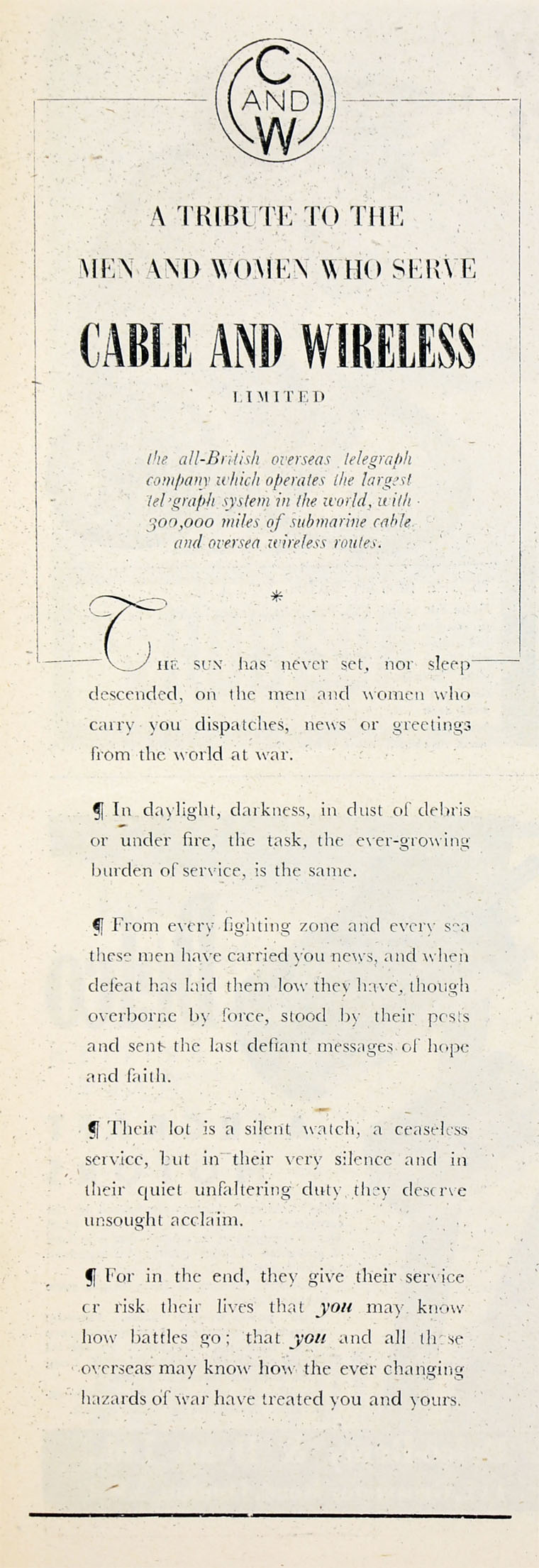 C&W Staff Tribute
A wartime tribute to C&W staff
C&W Staff Tribute
A wartime tribute to C&W staff
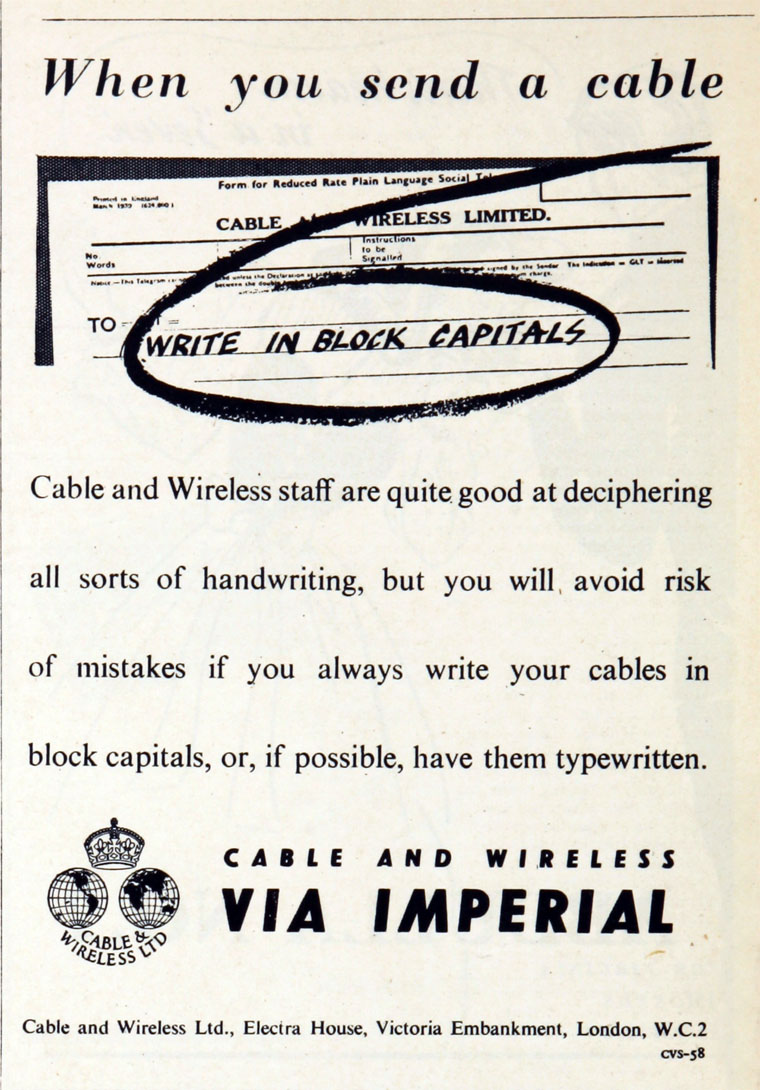 BLOCK CAPITALS PLEASE
Help the telegraphists read your writing
BLOCK CAPITALS PLEASE
Help the telegraphists read your writing
 Cable & Wireless advertisement
Cable & Wireless advertisement
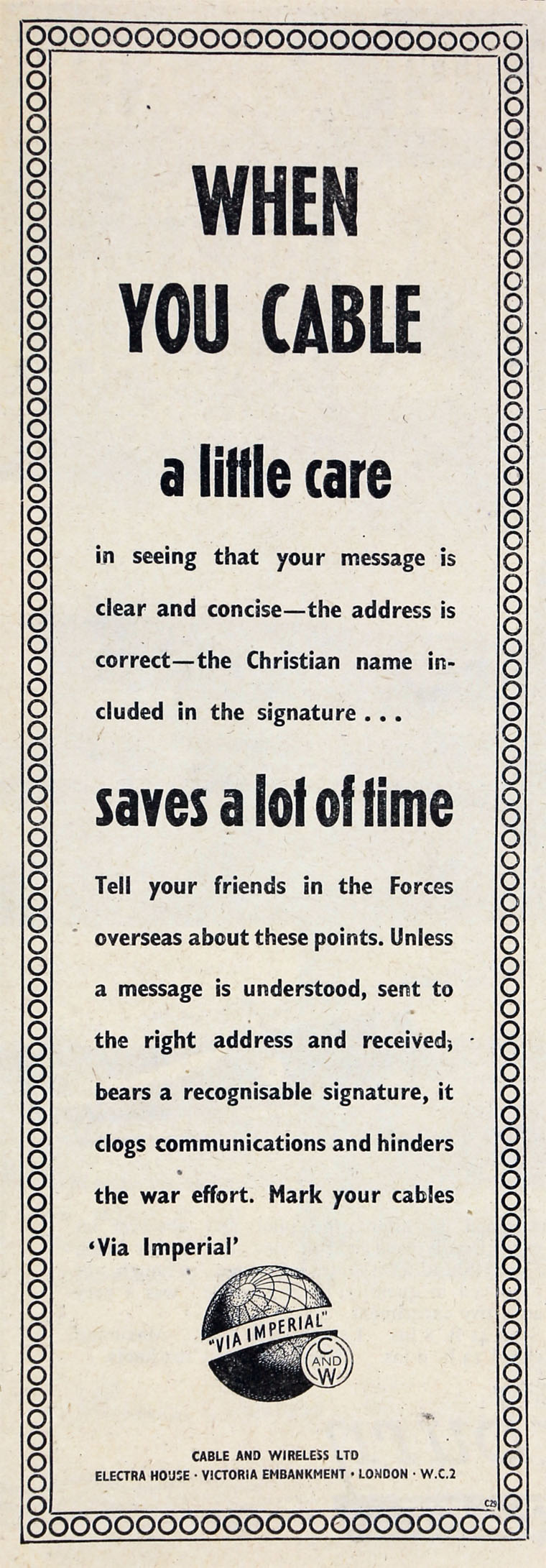 Legibility appeal
Wartime request for clarity
Legibility appeal
Wartime request for clarity
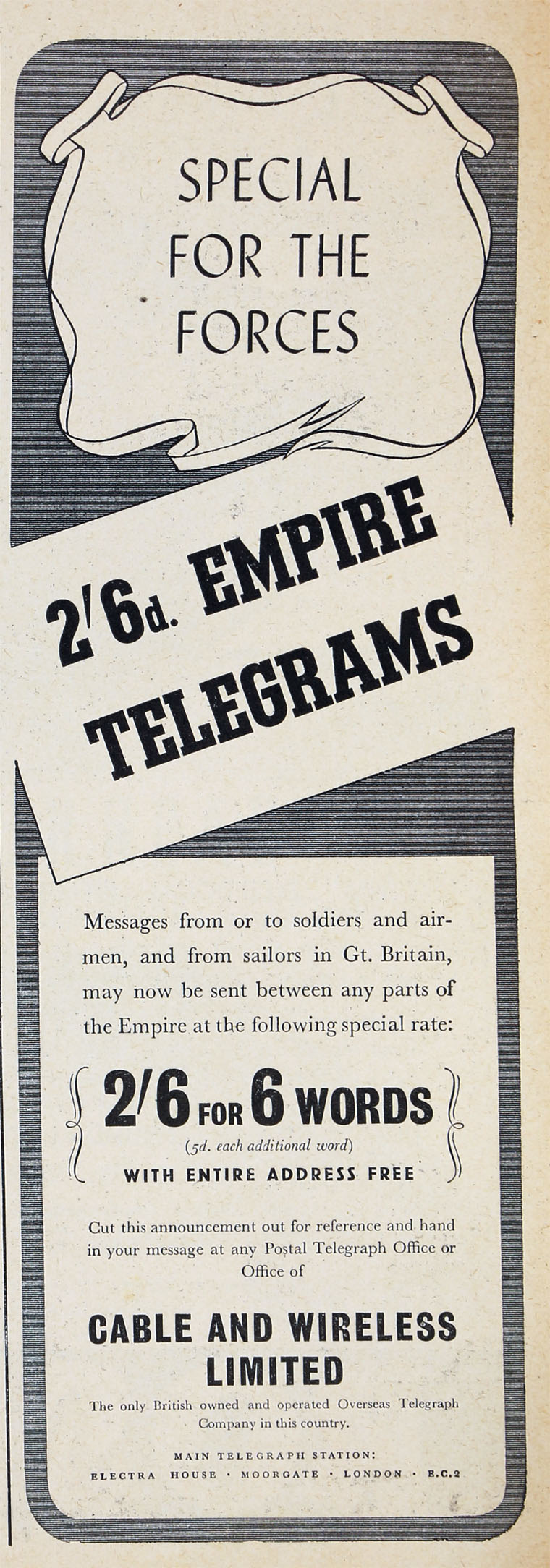 Cheap telegrams
Special rate for the forces
Cheap telegrams
Special rate for the forces
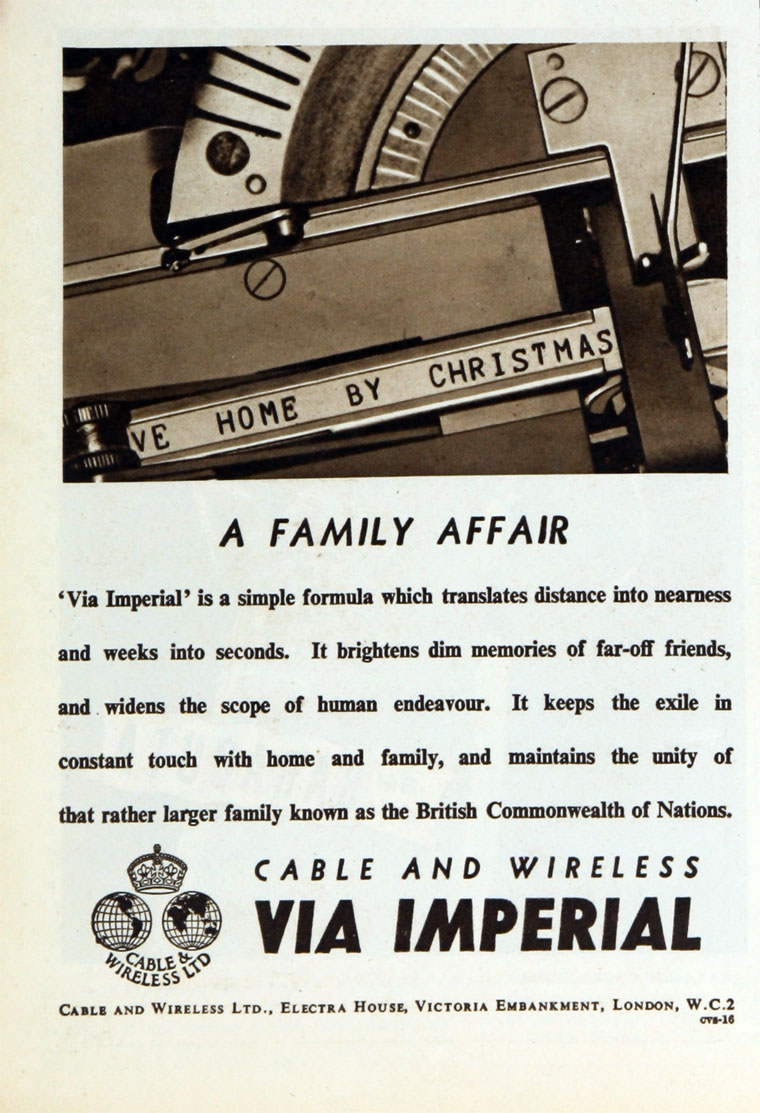 C&W advertisement
C&W advertisement
 TRC tie logo
TRC tie logo
TRC tie logo
TRC tie logo
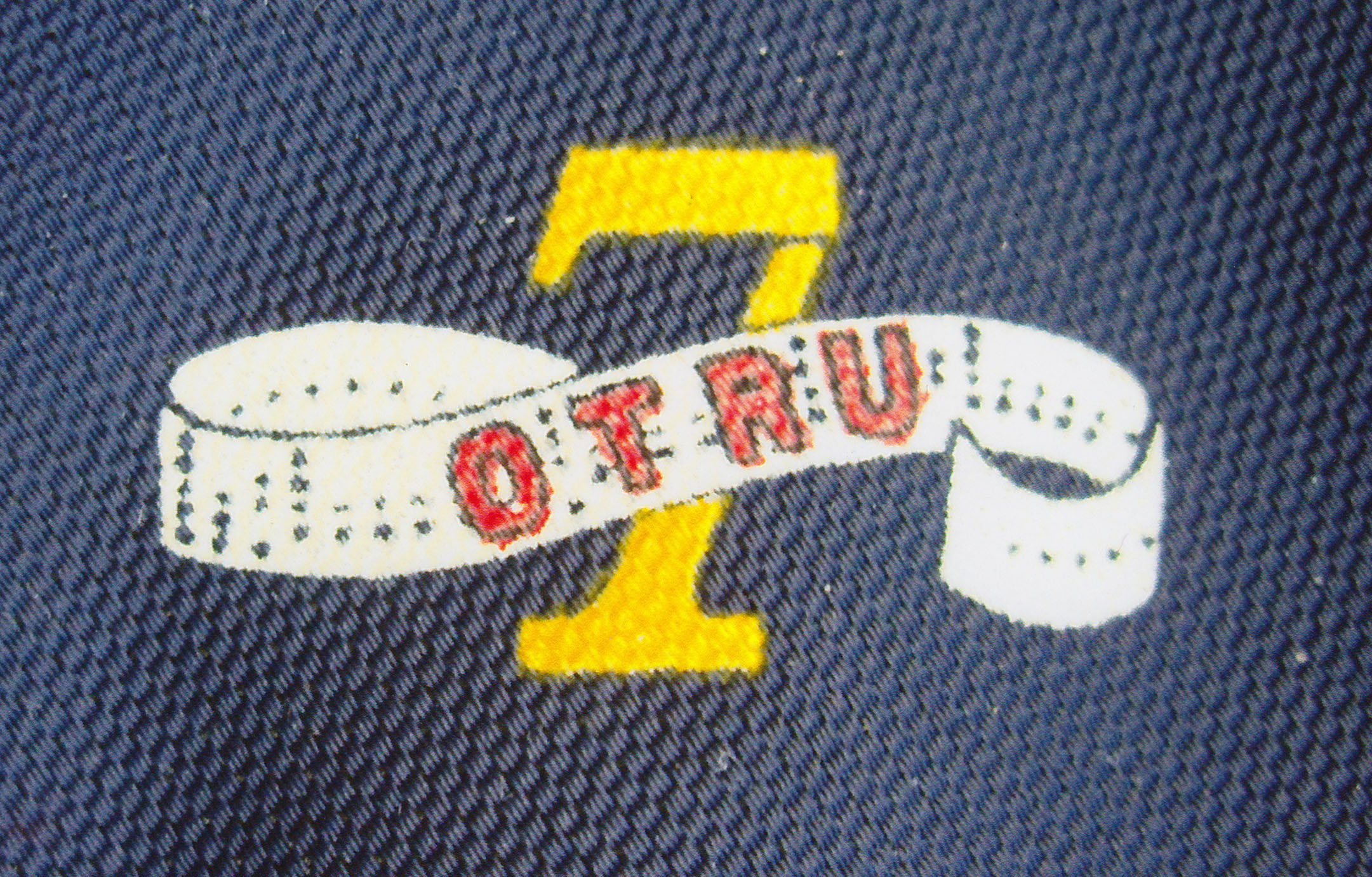 OTRU Tie logo
OTRU Tie logo
OTRU Tie logo
OTRU Tie logo
Lorem ipsum dolor sit amet, consectetur adipiscing elit. Nullam porttitor augue a turpis porttitor maximus. Nulla luctus elementum felis, sit amet condimentum lectus rutrum eget.